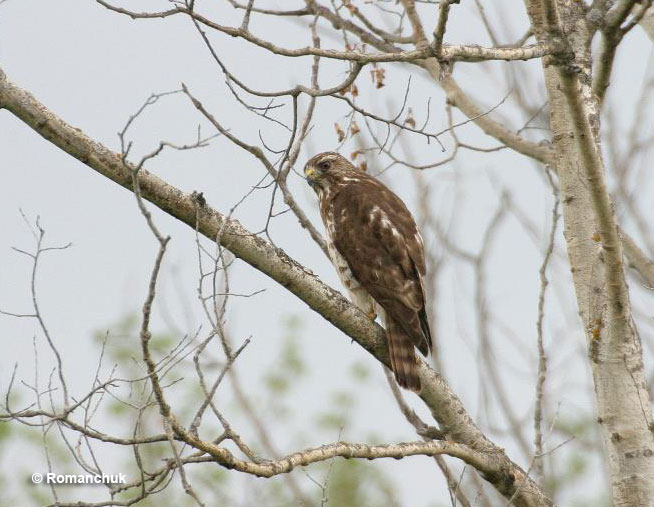The Broad-winged Hawk is a smaller-sized hawk. They have large heads, chunky bodies, and short, square tails. When in flight, their wide wings come to a distinct point, which is where they get their name from.
One of the most remarkable migration displays is a swirling flock of Broad-winged Hawks. These flocks are also known as “kettles, ” containing thousands of birds flying in a circular pattern.
On this page
Identification
Male and female Broad-winged Hawks look identical and are the same size. This can make it hard to identify the sex.
They have barred underparts, reddish-brown heads, and wide white and black bands on the tail. The undersides of their wings are pale and bordered with dark brown, which can help identify them while they’re in flight.
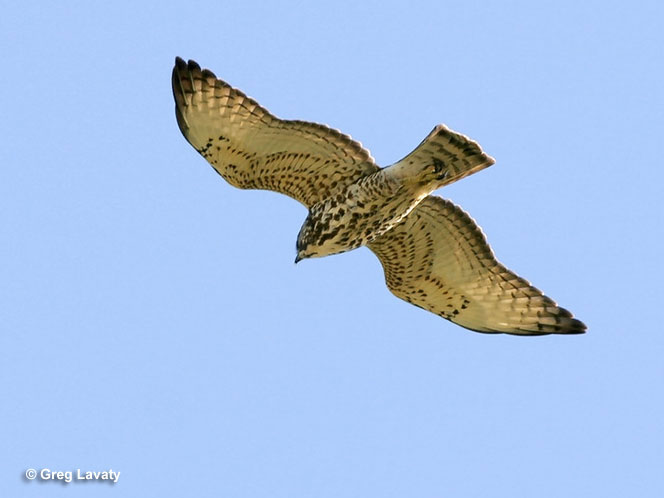
Juvenile Broad-winged Hawks are lighter in color and have coarse streaking on their underparts. This is especially true on the sides of the breast. Their tails are scarcely banded.
In the West, there is such a thing as dark-morph adults. These are rare, but they’re completely dark brown and have a banded tail.
Food
Broad-winged Hawks have quite the range when it comes to their diet. They’ll eat mostly insects, amphibians, and small mammals. These birds will hunt for prey from perches.
They’ll perch on anything, whether it be tree limbs or utility poles. However, these birds will almost always select perches underneath the forest canopy. When Broad-winged Hawks see their prey, they’ll swoop down and grab it from the forest floor. They rarely hunt and grab their prey while they’re in flight.
The prey they consume most frequently are toads, frogs, and smaller rodents. However, it’s important to note that these birds have a wide range in their diet. They’ve been seen consuming reptiles, invertebrates, mammals, amphibians, and other birds.
The birds they consume are usually juveniles and nestlings. Their invertebrate prey includes crickets, mantises, grasshoppers, ants, caterpillars, june bugs, ground beetles, click beetles, flies, crabs, spiders, and earthworms.
Nesting and Eggs
Broad-winged Hawks will nest in a variety of coniferous and deciduous tree species. Some trees they’ll use are European larch, yellow birch, white pine, trembling aspen, red pine, white oak, and white birch.
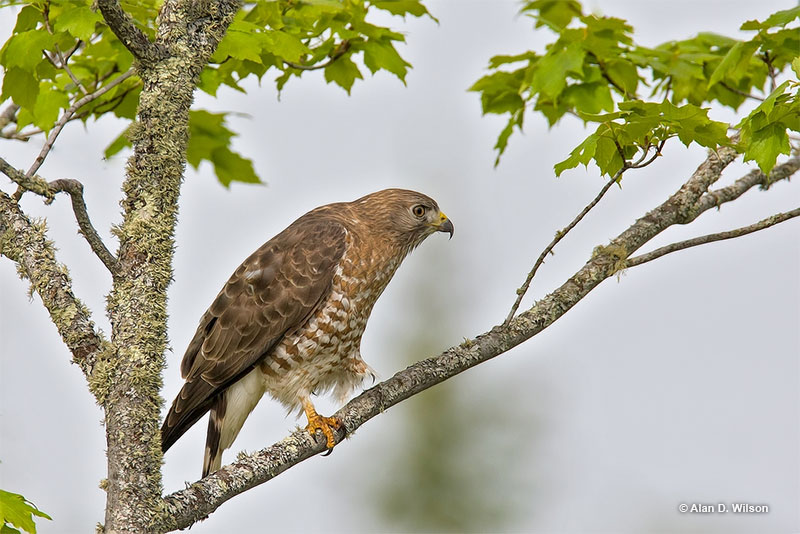
© Alan D. Wilson
Broad-Winged Hawk nests are on the lower part of the tree canopy, usually on a platform of horizontal branches against the trunk of a conifer or in the first main crotch of a deciduous tree. In addition, Broad-winged Hawk pairs will occasionally reuse nests from previous years or restore old nests made by other species.
Female Broad-winged Hawks are the ones that construct the nest, but the male does assist. First, they’ll gather dead sticks from the ground and carry them to the nesting location to build the main structure. Then, the female Broad-winged Hawk brings fresh plant sprigs and bark chips in her beak for the nest cup.
It’ll take 2 to 4 weeks to build the nest. Some materials used to build the nest are corn husks, grapevine, moss, lichen, pine needles, and feathers. The nest can range from 12 to 21 inches wide and 5 to 12 inches tall. The inner cup is 6 to 7 inches wide and has a depth of 1 to 3 inches.
Broad-winged Hawks usually just have one brood, there are 1-5 eggs. The incubation period ranges from 28 to 31 days, and after that, the young hawks stay in the nest for at least 35 days.
Current Situation
Broad-winged Hawks are found in extensive forests throughout southern Canada and the eastern United States during their breeding season. They’ll nest near bodies of water and forest clearings as far away from human disturbance as possible.
When these birds migrate, they’ll roost on the edges of cloud forests, arid tropical scrub, and tropical forests. Some juvenile birds have been seen wintering in south Florida and the Florida Keys, where they use avocado and mango groves. However, most Broad-winged Hawks winter along the forest edges and in the forests of southern Mexico to Bolivia and Brazil.
Broad-winged Hawk populations have been on the rise since the late 1960s. There is a large number of them, with their estimated breeding population being 1.9 million, meaning they’re a species of low concern.
However, it’s important to note that the Puerto Rican subspecies are on a Watch List and are currently listed as Endangered. The northeastern U.S. became reforested in the past century, which is excellent for this species because it increases habitats for breeding. Still, this benefit could be lost due to increasing human development.
Migration numbers dropped in the 1990s from either a change in migration patterns or a population decline. The most significant threat to Broad-winged Hawks is habitat destruction, especially in their wintering range. Birds that winter in the Florida Keys and hunt along the sides of roads are more vulnerable to vehicle strikes.
Facts
- Studies conclude that on average, Broad-Winged Hawks travel 4,350 miles when migrating south for the winter. To track them, satellites were used, and once they reached the grounds they winter on, these birds did not travel very far. They stayed within a mile of their area.
- Thousands of Broad-winged Hawks leave the Canadian and United States forests for South America every fall. They fill the sky in sometimes huge flocks, called “kettles,” and it’s truly an extraordinary sight.
- The oldest recorded Broad-winged Hawk was a male. He lived to be no less than 18 years and 4 months old. He was initially captured, banded, and released in 1970 in the state of Florida. He was then recaptured and rereleased after suffering from an injury in the same state in 1987.
- There are records of Broad-winged Hawk fossils from the Late Pleistocene period in Iowa, Florida, Illinois, Puerto Rico, and Virginia. These fossils are around 400,000 years old.
Similar Species
The Broad-winged Hawk has features that are similar to other bird species. Here are some similar species:
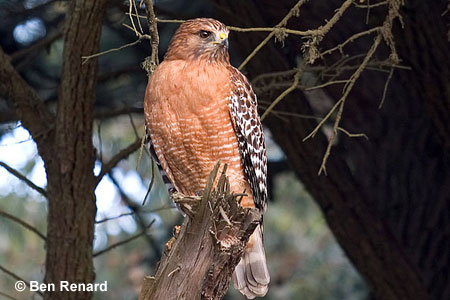
Red-shouldered Hawk
Broad-winged Hawks have brown-streaked bellies and brown chests, while Red-shouldered Hawks have reddish-brown barring on the stomach and chest.
Additionally, Broad-winged Hawks have broad bands on the tail and pale underwings, while Red-shouldered Hawks have narrow bands on the tail and black-and-white checkered underwings.
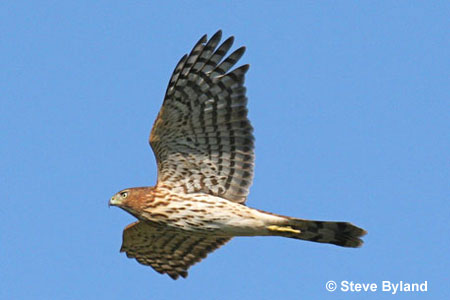
Cooper’s Hawk
Broad-winged Hawks are shaped differently. They have much shorter tails and are more slender.
Cooper’s Hawks also have reddish barring on their chests, gray upper parts, and red eyes.
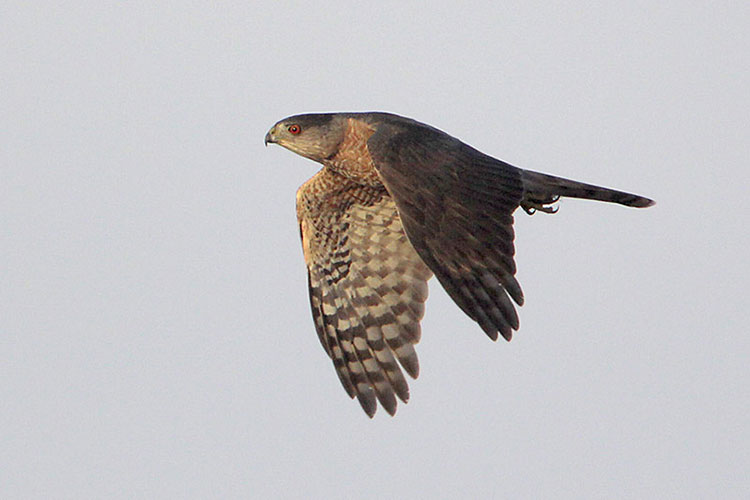
Sharp-shinned Hawk
Broad-winged Hawks are overall brown in color, while Sharp-shinned Hawks have finely barred breasts and are gray on the upper parts.
They also have red eyes and longer tails.
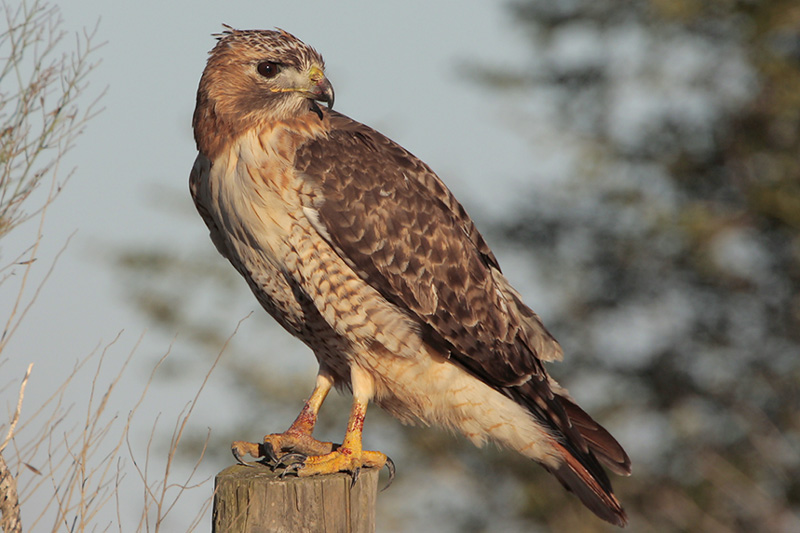
Red-tailed Hawk
Broad-winged Hawks are smaller than Red-tailed Hawks and have a band of brown streaks on their bellies.
They also have dark brown bars on the front edge of their underwings and reddish tails with no bold black-and-white bands.
Frequently Asked Questions
How can you tell a Broad-Winged Hawk apart from others?
Broad-winged Hawks have some features that make them stand out, but at the same time, they look similar to other species of hawks. Check out our similar species section above to find out how to tell these birds apart from others.
How rare are Broad-winged Hawks?
Broad-winged Hawks are one of the most common hawks in North America. There are approximately one million birds in North America.
What is another name for Broad-Winged Hawk?
Another name for the Broad-winged Hawks is the Latin name Buteo platypterus.
Where do Broad-winged Hawks live?
Broad-winged Hawks live in extensive forests throughout southern Canada and the eastern United States during their breeding season. When they migrate, they’ll roost on the edges of cloud forests, arid tropical scrub, and tropical forests. They winter along the forest edges and in the woods of southern Mexico to Bolivia and Brazil.
What is Broad-Winged Hawk’s wingspan?
Broad-winged Hawks have a wingspan of 31.9 to 39.4 inches (81 to 100 centimeters).

